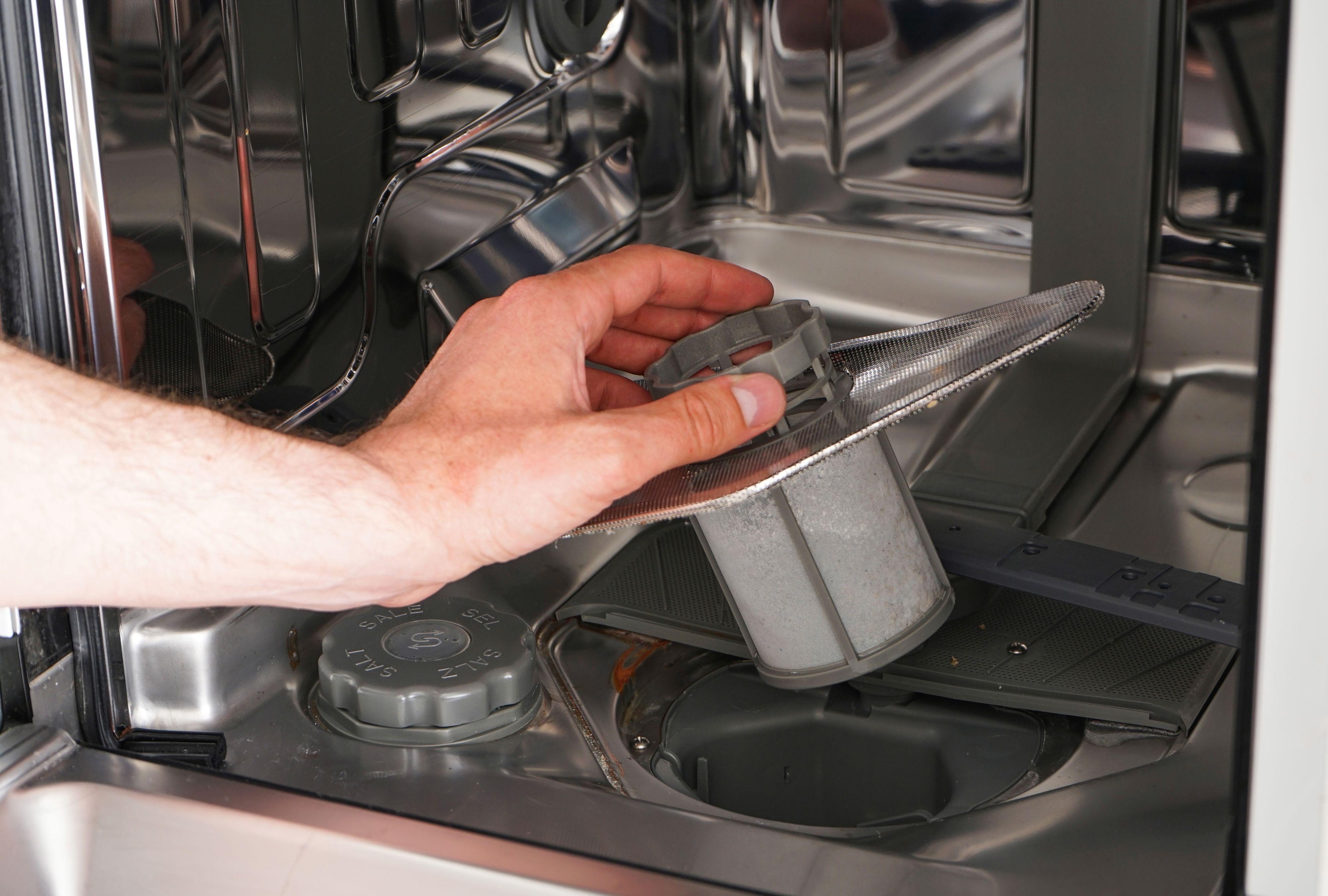A clogged dishwasher can result in slow-draining or standing water in the dishwasher tub, foul odors, and dishes that never seem to get fully clean. If these symptoms sound familiar, you likely have a clog, but before you can fix it, you need to locate the clog, which is often the most challenging part of the job. Learn where to look for dishwasher clogs, how to unclog a dishwasher yourself, and when you should call a professional to inspect your appliance and plumbing.
How to Clear Common Dishwasher Clogs
The appropriate method for unclogging a dishwasher depends on the type of clog you’re dealing with. This list outlines the most common sources of dishwasher clogs and provides instructions on how to clear each type.
Before attempting to unclog your dishwasher, disconnect or turn off the power supply to the appliance.
1. Drain Filter Clogs
Drain filter clogs are among the most common dishwasher clogs. Most dishwashers have multiple screens and filters with different-sized holes to capture food debris and grime, preventing it from being washed further downstream.
However, the dishwasher drain filters should be regularly removed and cleaned to ensure that dirty water can still drain efficiently from the appliance, as they’re prone to clogging.
To remove the filter, follow these steps:
- Remove the dishwasher rack.
- Remove any standing water.
- Lift out the upper screen.
- Lift out the filter.
- Clean both the filter and the upper screen.
- Check for any clogs or food debris inside the filter housing.
- Reinstall the filter, upper screen, and dishwasher rack.
2. Drain Hose Clogs
Occasionally, debris can make it past the dishwasher filter, potentially leading to a clogged dishwasher drain hose. This is even more likely to result in a clog if the drain hose is kinked, which is a common occurrence.
To check the hose, access it beneath your sink. However, you may need to disconnect the hose and pull the dishwasher out of position to fully assess the hose.
If the hose is kinked, redirect it so it flows freely. If you find a clog, disconnect the hose and flush it with hot water until the clog clears.
Related
3. Spray Arm Clogs
Sometimes, the dishwasher clog can be inside the spray arms. If this is the case, your dishwasher still drains as usual, but you’ll likely notice dirt, debris, or a greasy film on your dishes after the wash cycle because the clogged spray arms aren’t washing and rinsing as intended, leaving the dishes dirty.
To clean the spray arms, follow these steps:
- Remove the spray arms. Most models unclip or twist out of their position.
- If possible, disassemble the spray arms. Some spray arms can be opened for better access for cleaning the inside.
- Use a toothpick to clean the small holes.
- Soak it in a warm water and vinegar solution to loosen up stubborn grime, then rinse until clean.
- Reassemble and reinstall the spray arm.
4. Garbage Disposal Clogs
If you have a garbage disposal, check to ensure it’s not full of food debris, as this can prevent the dishwasher from draining properly, leading you to believe that the dishwasher itself is clogged.
How to Clear Deep Clogs
If you believe the dishwasher drain is clogged beyond the filter, you can use a drain snake to gently clear the clog. Follow this with a vinegar and baking soda rinse to clear any stuck-on debris. Use 1/4-cup of baking soda, followed by 1/2 cup of vinegar, to produce a foamy reaction that helps loosen stubborn grime. Once it stops fizzing, rinse off the residue.
After clearing the clog, run a dishwasher cycle without any dishes or detergent to clean the interior and flush out the drain. Add a cup of vinegar to the dishwasher to freshen the interior and help clear out the drains.
When to Call a Professional
If you’ve checked all the common dishwasher clog locations to no avail and your dishwasher is still draining slowly, it may be time to have a professional take a look. Plumbers will be able to rule out any clogged plumbing beyond the dishwasher, while appliance technicians can ensure the dishwasher is working as intended.



